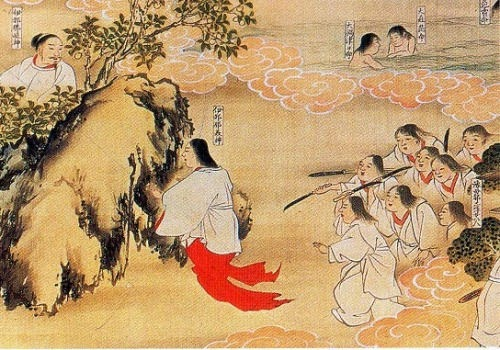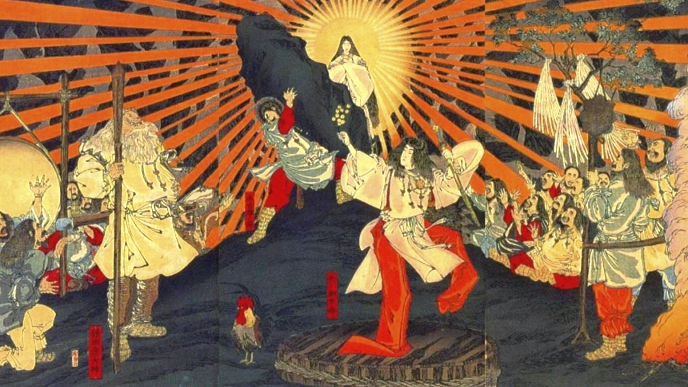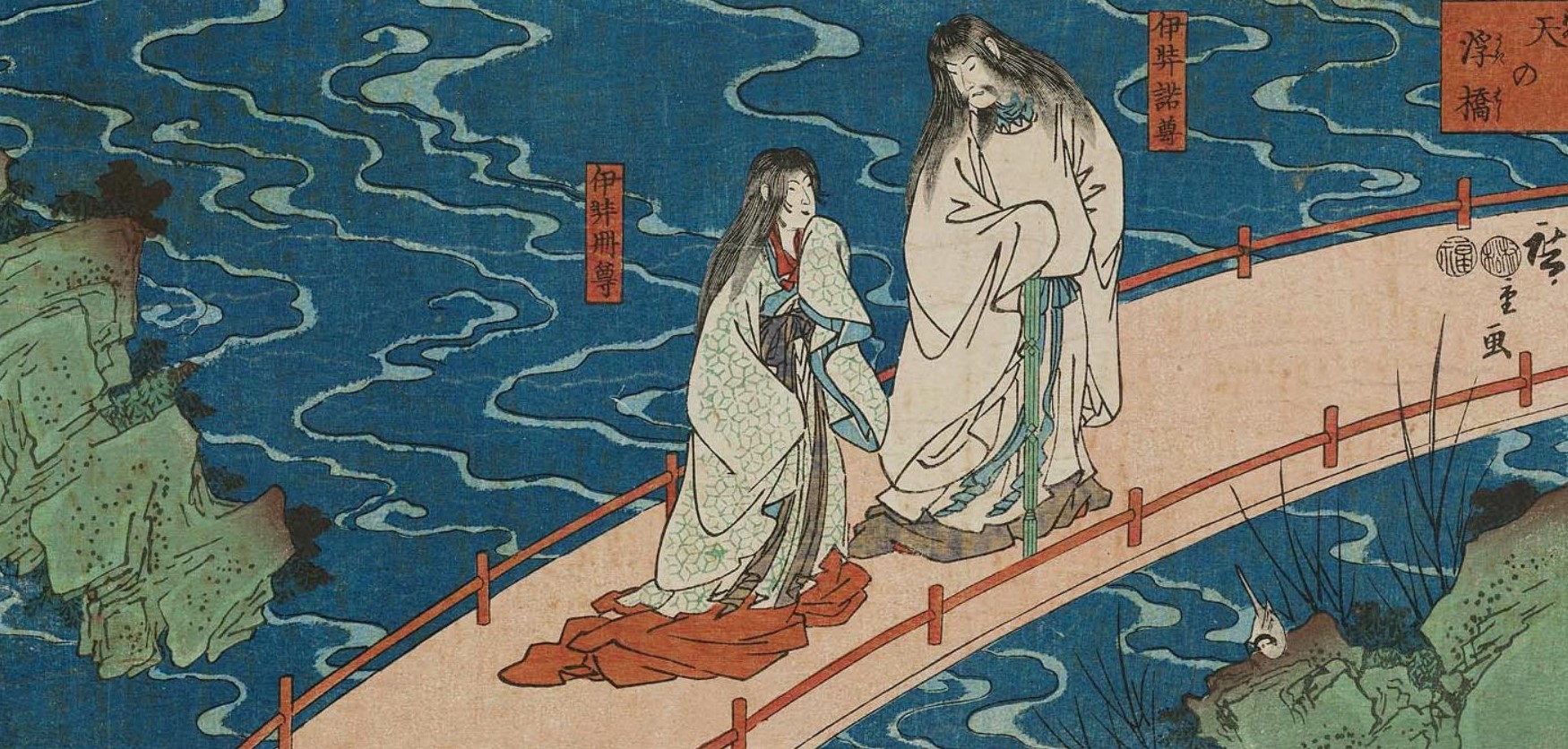By Dimitris Topalis,
Japanese mythology is one of the most interesting mythologies that exist, as it contains a list of epic tales, tales of adventures, and some even reflecting real-life phenomena. Japanese mythology includes the stories of two religions, one being the religion of Shinto (a polytheistic religion that originates from East Asia), and the other being Buddhism. These stories were passed on from generation to generation, either by speech or by writing. Japanese deities are being referred to as kami (神: “god”). Japanese mythology starts with a universe full of darkness and silence. Then, after many years, particles began to move and started creating sounds. The lightest of them would form the heavens, where the first gods appear. The remaining particles create the Earth, but at a slow pace, so it needed millions of years to be complete. After the council of the gods, it was decided that two gods, Izanami-no-Mikoto (伊邪那美: “She Who Invites”) and Izanagi-no-Mikoto (イザナギ: “He Who Invites”) would rule the Earth. Izanagi and Izanami, while standing on the stairway of heaven, used Amenonuhoko (天沼矛: “heavenly jeweled spear”) to stir the ocean during a disturbance, but when they withdrew, the spear crystals began to fall to the ocean, thus creating the islands.

The cursed marriage between Izanami and Izanagi
The first island that was created by Izanami and Izanagi was Onogoroshima (淤能碁呂島: “muddy sea has the ability to bind rocks and stones accumulated to form a bridge”). There, the two gods decided to build a house and get married. The wedding ritual included circling around two pillars, with the two gods moving in opposite directions. During the ceremony, Izanami, the female god, wrongly spoke first, thus inflicting a curse that would bring consequences to the couple. Their first child was born ugly and without bones. This child was the god Hiruko (蛭子: lit. “leech child”), who is mostly known by the name Ebisu (えびす) and is the god of fishermen and luck, as well as one of the Seven Gods of Fortune (七福神, Shichifukujin). The second child of Izanami and Izanagi was the island Awashima (粟島), but again, because of the curse, the two parents were disappointed by the result. After that, both Izanami and Izanagi went to find their parents, who are known as the Seven Gods of Fortune, and ask them why this happened to them. They revealed the mistake that happened during the ceremony of their marriage and then they repeated the ceremony, with Izanagi speaking first this time. Then, the two gods had more children that include the eight principal islands of Japan (Awaji, Shikoku, Oki, Tsukushi or Kyushu, Iki, Tsu, Sado, and Oyamato).
The myth of the Sun, the Moon, and the Wind
Izanami and Izanagi created a lot of gods that each represent nature. However, when the fire god Kagutsuchi (カグツチ) was born, Izanami was badly burned, slowly nearing her death. Even at her death, she continued to create gods and goddesses. Isanagi, after his wife’s death, went to bring her back from the dead from Yomi (黄泉: “the land of the dead”; “World of Darkness”). Isanagi was happy when he spoke to his wife. Due to the darkness in Yomi, Isanagi wanted to bring light to see Izanami once again. However, she warned him not to do that but, filled with excitement, he lit up a torch and looked into Yomi. Then, as he stared at the rotting corpse of Izanami, he fled horrified. Izanami, angry at her husband, sent eight warriors of Yomi after him but he escaped. Then Izanagi returned to break his marriage and went to purify himself (禊, misogi). When he washed his head with water, he created the three most important gods in Japanese mythology. The first was Amaterasu (天照大御, the incarnation of the sun; goddess of the sun), the second was Tsukuyomi-no-Mikoto (月読命) or simply Tsukuyomi (月読, the incarnation of the moon; the moon god) and the third was Susanoo (スサノオ, the incarnation of the wind; god of sea, storms, fields, the harvest, marriage, and love). After that, Izanagi went to divide the world between the three, with Amaterasu inheriting the heavens, Tsukuyomi getting the night and the moon, and Susanoo getting the sea. Due to the little information we have in regard to Tsukuyomi and Susanoo, we will only talk about Amaterasu in the next paragraph.

The myth of Amaterasu and the cave
One of the most famous myths of Japanese mythology is that of Amaterasu and the cave. Amaterasu and Susanoo did not see eye to eye, so there were many conflicts between them. During one of their famous fights, Amaterasu hides inside the Cave of Heaven and this causes the entire world to sink into darkness and evil spirits began to swarm the Earth. After a long time had passed, Amaterasu peaked out of the cave and Ame-no-Tajikarao (アメノタジカラオ: “heaven hand power”) pulls her out of the cave, thus restoring the light and balance into the earth.

References
- F. Hadland Davis, Myths and Legends of Japan, Dover Publications, 1992




